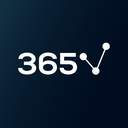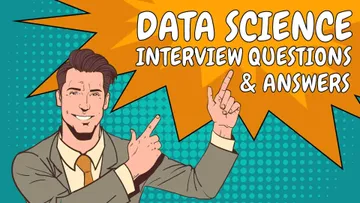Congratulations! You’ve got an interview for a business intelligence (BI) analyst role soon. As businesses strive to optimize the value of their data, there’s an increasing demand for BI analysts. Preparing for a BI analyst interview can be overwhelming, especially if you’re just starting your career.
This article will help you navigate the BI interview preparation process. Here’s what you’ll discover:
- How to prepare for a BI analyst interview
- Common BI analyst interview questions and answers
- The BI interview process at three prominent companies
- Tips to ensure flawless performance
Want to Practice These Interview Questions Live?
Try our AI-powered interview simulator! Customize your interview experience by selecting:
- Your target role
- Dream company
- Interview type (HR or Technical)
- Your background and experience level
Get instant feedback and a detailed score report after each practice session. Take your interview prep to the next level!
Skills Needed to Ace the BI Analyst Interview
To successfully answer BI analyst interview questions, you need relevant knowledge and skills, including:
- Advanced SQL, Python, or R proficiency
- Experience with Power BI
- Advanced Tableau Desktop and Server abilities
- Advanced Excel capabilities
And before you deep dive into the world of advanced analytics, equip yourself with the requirements and expectations with our Starting a Career in Data Science: The Ultimate Guide.
BI Analyst Interview Questions You Should Prepare For
General BI Analyst Interview Questions
1. Tell me about your educational background and the business intelligence analysis field you’re experienced in.
How to Answer
A business intelligence analyst can concentrate on various industries, such as finance, economics, IT, statistics, manufacturing, etc. Share with the interviewer which area you specialized in while obtaining your university degree, and briefly outline where your career journey has taken you. Ensure to demonstrate a keen interest in the company’s industry of operations.
Answer Example
I’m a finance graduate specializing in business administration. My education has helped me immensely on my business intelligence career path as my interest and expertise evolved in business law, microeconomics, and financial accounting.
2. What’s your experience in SDLC and UAT?
How to Answer
A seasoned BI analyst will have exposure to systems development lifecycle (SDLC) and user acceptance testing (UAT). When a company adopts new software or application to their business, the transition must be well thought out, carefully tested, and effectively deployed within the organization. An experienced business intelligence analyst can facilitate this process, saving the company time and financial resources. Talk about your exposure to SDLC and UAT. If you lack the experience, emphasize your interest in becoming familiar with these activities and learning.
Answer Example
Although I have limited exposure to SDLC, I’ve been involved in the UAT phase of some projects. I enjoy analyzing which aspects of a new software program or application are the most challenging to implement, which are the easiest to accommodate, and how to proceed.
3. Do you plan on continuing your education with an MBA?
How to Answer
With this question, the hiring manager wants to assess your interest in further development that would result in more significant career opportunities. Many accomplished BI analysts have a bachelor’s degree, while others hold a Master of Business Administration (MBA) degree. An MBA affords you an in-depth understanding of enterprise business, the economy, and how various economic and social factors affect the business environment. An MBA isn’t necessary for BI analysts, but it could give you a competitive edge.
Answer Example
I have certainly thought about earning an MBA parallel to advancing my career. As a business intelligence analyst, I believe an MBA would expand my business economics knowledge and, in turn, benefit my future employer and their clients.
4. What is your opinion about Agile software development for BI projects? Do you support employing Agile methodologies with your company’s clients?
How to Answer
Agile stimulates collaboration with a team’s clients and the end-users, enabling more cross-functional projects to run smoothly. Since its onset, Agile software development has received a warm welcome from companies worldwide. But some still strongly prefer the structured development methodology of Waterfall. So, before sharing your thoughts on Agile with the interviewer, ensure you know where the company stands on Agile.
Answer Example
I know that Agile software development is much more collaborative than other software development models. Agile can be the best solution for several projects. I’d love to get familiar with the methodologies employed here. The results matter most, not the methods behind the projects.
Technical BI Analyst Interview Questions
1. Which data modeling software do you prefer?
How to Answer
BI analysts mostly use Microsoft Excel or Power BI for data modeling. The required or preferred tools will be listed in the company’s job description, so it would be best to refer to those. If you have relevant experience, share your level of expertise with the interviewer. If you lack exposure to their preferred software or programs, explain how you can incorporate your skills into their systems.
Answer Example
I do most of my data modeling in Excel, which is most convenient for data mapping. And I also have some exposure to Power BI. But I could benefit from sharpening my skills in that program. That’s why I’m currently taking Power BI online training.
2. What specific technical skills do you have as a BI analyst?
How to Answer
Whether you’re a data BI analyst, IT BI analyst, or strategic BI analyst, your answer to this question will pertain to your background. Your BI analyst experience and skillset depend on the focus of your career. So, find a way to share with the interviewer the technical skills you will bring to the company and the value they add to the day-to-day operations.
Suppose you’re applying for a data-focused role. In that case, your technical skillset may include proficiency in data analysis software and visual presentation tools, such as Power BI. By contrast, a BI analyst in the IT field would probably have exposure to some software development programs. At the same time, a strategic BI analyst would be well-familiar with business case analysis software and applications.
Answer Example
As a data BI analyst, I’ve been exposed to data mining and big data software, such as LIONsolver and Oracle. I’m highly skilled in Microsoft Excel, which I use for data modeling, and Power BI, where I create rich visuals and client presentations.
3. Specify two important chart types in your BI analyst arsenal. Why do you find them essential?
How to Answer
The hiring manager wants to see that you have basic knowledge of the diagrams and charts you will use for your BI analyst’s tasks. Some examples include:
- Area charts
- Bar charts
- Clustered column charts
- Combo charts
- Doughnut charts
- Funnel charts
- Gauge charts
- Line charts
- Pie charts
- Scatter plots
- Waterfall charts
You’re probably familiar with most of these, so choose two charts you have experience with and can easily discuss. Learn more about the different chart types from our article How to Create a Matplotlib Bar Chart in Python.
And if you find this answer helpful, consider sharing this article so that others can benefit from it, too. Helping fellow aspiring BI analysts reach their goals makes the data science community unique.
Answer Example
The two charts I use most often are area charts and bar charts. In my role as a BI analyst, area charts have helped me display where a specific trend is headed in the future, which, in turn, makes planning easier. On the other hand, bar charts can clearly show which products are most popular among customers or display the number of unique visitors on a landing page based on various criteria.
4. How would you define benchmarking, and why do you consider it essential?
How to Answer
Benchmarking is the practice of evaluating and comparing the business processes in a company with the best competitors’ practices and using these insights to set standards and improve your company’s business performance. When BI analysts benchmark, they study various metrics and processes, such as product development and manufacturing procedures. Discuss how you use benchmarking to help your company achieve its goals with the interviewer.
Answer Example
Benchmarking is essential to compare your business against other already successful companies. It's a smart, analytical comparison. It’s necessary to benchmark when a company is looking at making a significant change, seeing a loss of revenue, anticipating a new product launch, or needs to recalibrate its business operations.
5. How do you differentiate between a risk and an issue?
How to Answer
If you’re an experienced BI analyst, you know the tremendous difference between actual risk and an issue. The interviewer wants to check if you can be mindful of probability while, at the same time, staying focused when it comes to current issues.
Answer Example
As a business intelligence analyst, I focus more on risk than issues. I view risk as a predicted problem that could come up in the future, so it’s up to me to assess this risk and help my clients prevent it. An issue, on the other hand, is a risk that has already happened. In such cases, I can advise my clients on how to do damage control. But I’d strongly prefer helping them avoid the issue altogether.
6. What’s your preferred decision-making technique?
How to Answer
Discuss the methods you utilize with the interviewer and the reasons for your preferences. The interviewer wants to see what you know about decision-making and your techniques to arrive at reliable conclusions in your projects. Some standard decision-making techniques include T-Chart Analysis and Pareto Analysis (the 80/20 rule).
Answer Example
I don’t limit myself to one technique. In decision-making, my choice depends mainly on the stage of the project. Sometimes, I use various methods within the project, such as Pareto Analysis, T-Chart Analysis, SWOT Analysis, or decision trees. Each of these helps me resolve specific issues and come to a decision.
7. Explain Selection Bias.
When randomization is not achieved, selection bias is introduced by selecting individuals, groups, or data during sampling. Our analysis will be flawed if we’re not careful when we collect our data.
This means that the created sample does not represent the general population properly. It’s called selection because it refers to the sample selection. Selection bias is a broad term that encompasses the following different biases.
Sampling bias
Sample selection bias occurs when only some people in the general population have an equal chance to be in the sample. Let’s say that we want to research students in a particular university. We can go to the university, enter random classrooms, and ask all of them to participate in our survey. Great, right? Well, not exactly. There are two main issues with this scenario:
- We assume that everyone who is a student at the university will be present at the chosen time and date. And that’s never the case since students don’t have lectures every day, work part-time, get sick, or go on vacation.
- We also expect that everyone will answer the survey, which is a very optimistic assumption.
Length time bias
This bias occurs when different observations in the sample exhibit various development cycles, with a notable example being diseases like cancer. Certain types of cancer develop faster than others, leading to substantial differences in the progression of the disease over six months for two individuals. Patients may be in different stages of cancer and often have a diverse biological response to the disease. So, time is a significant challenge when analyzing our sample.
Exposure bias
Suppose you have funding to explore everything there is to know about a group of customers, e.g., female buyers. Shortly after, you’re asked to conduct another study about your customers’ shopping habits. This is a widespread and problematic type of bias.
Using only the female data you already have would give you some results, but they would be problematic because they aren’t representative enough. If you work with no male data, you’ll experience exposure bias upon completing the study. That’s what happens when resources are limited—sampling has been done once, and nobody wants to pay for another.
Data bias
While there are numerous instances, one popular case is the removal of outliers with correct data from the analysis. Typically, we remove the outliers to enhance the accuracy of the results, but it’s also worth mentioning that some outliers provide valuable insights or patterns.
Studies bias
We often form a hypothesis and look for studies to support it. But with this premise, one could be misled to reference only papers that support their claim and therefore introduce a bias. (Academia is highly biased in this regard.) Research suggests that papers presenting positive results are four times more likely to be published than those with non-satisfactory results. And we know that determining “there is no effect” is still a valid result.
Attrition bias
This bias is related to survivorship bias. Companies reviewed by various studies are profitable; those that aren’t profitable cease to exist and cannot be analyzed. The most common example involves startup businesses.
Observer bias
Observer bias is the tendency to see what we expect to see—to have already decided the outcome we want and strive for the results to prove us right. This is closely related to studies bias.
8. What is Kano Model Analysis, and why is it important?
How to Answer
The Kano Model Analysis taps into customers’ emotions and needs to improve product development. It helps a company add certain features to its product that would increase customer satisfaction without costing a fortune. According to the Kano Model Analysis, there are three types of attributes to products:
- Basic
- Performance (satisfiers)
- Excitement (delighters)
When answering this question, demonstrate that you’re familiar with the three points of satisfaction and know how they act together to help customer satisfaction analysis.
Answer Example
Kano Analysis is an indispensable part of developing new products and services. It helps companies understand customer needs and ensure a competitive edge before launching them on the market. The threshold attributes are the basic features a customer expects from the product. The performance attributes (or satisfiers) are additional features that increase customer satisfaction. And delighters are the elements of surprise that can increase the product’s competitive edge.
9. What are the most important SDLC models?
How to Answer
Software Development Lifecycle (SDLC) is a process that starts with the decision to launch a product and ends with the complete removal of the software product from exploitation. The software product type in development predetermines various SDLC models.
The most popular SDLC models include:
- Waterfall
- Iterative
- Spiral
- V-shaped
- Agile
Even if you have no experience in the field, show the interviewer that you understand the differences between the models by briefly outlining them.
Answer Example
Although I don’t have practical experience with ADLC models, I learned in college that there are five primary SDLC model types: waterfall, iterative, spiral, V-shaped, and agile. The agile model is related to flexibility and adapting to change. The iterative model refers to the incremental-build approach in extensive development efforts. I’m less familiar with the rest, but I would enjoy diving deeper and learning more.
Behavioral BI Analyst Interview Questions
1. How do you demonstrate to your clients the importance of dialogue during a project?
How to Answer
Leading by example is vital for clear communication through every project stage. As a business intelligence analyst, it’s your job to establish the tone of the dialogue and the means of communication. Show the interviewer that you know how to communicate properly with your clients and their teams by giving examples of projects you’ve worked on.
Answer Example
As a business intelligence analyst, I keep everyone in the loop about project development. I often promote using project management apps that make collaboration easier and give access to every detail of the project at any stage.
2. As a business analyst, when do you regard a project as complete?
How to Answer
A great business analyst knows that when a client signs off on a project, it doesn’t mean it’s successful (or finished). So, explain to the interviewer that you remain available to your clients and support them until you’re sure their expectations are met and they are happy with the results.
Answer Example
As a BI analyst, I always ensure no unresolved issues when the client signs off on a project. Nevertheless, I’m available if their expectations aren’t fully met, and I still need to deliver what has been promised. But this rarely happens once there are no outstanding invoices and documentation is archived.
3. How often do you brainstorm new ideas with your co-workers?
How to Answer
Regular discussions with other team members make a difference to project planning and aligning ideas. Let the interviewer know you’re a team player and open to others’ views and opinions.
Answer Example
Learning from each other’s working styles and approaches is invaluable for any project. I support the collaborative spirit in my team, and we always come up with better ideas together rather than individually.
4. Is there a case in your experience when you broke a confidentiality agreement?
How to Answer
Confidentiality agreements ensure the protection of company trade secrets. This question allows you to present yourself as a trustworthy individual.
Answer Example
I have signed NDAs on countless occasions in my career as a business intelligence analyst. Confidentiality is one of my team’s top priorities when working on a project. None of us has broken the trust of our company and clients.
5. How do you respond when you’re unhappy with the result of a project?
How to Answer
Not all projects are perfect, and not all clients can be satisfied. Even the best BI analysts experience failure at times. The interviewer would like to know if you can accept disappointment and respond maturely and productively.
Answer Example
Business intelligence requires perfectionism. When I’m unhappy with my performance or make a mistake, I take a step back and take my time to fine-tune my work before submitting it.
6. How do you plan to improve yourself professionally this year?
How to Answer
Employers welcome BI analysts who constantly upgrade their skills and strive to stay relevant. You can set career development goals and accomplish them by attending conferences, earning online certificates, listening to podcasts, or even joining a mentoring program. When you mention some of these examples and the goals you’ve set for yourself this year, bridge the knowledge you’ll gain with the benefits you’ll bring to the company.
Answer Example
This year, I’ve enrolled in a Power BI online course to refresh my expertise, and I’ve also signed up for a few TDWI seminars in Predictive Analytics and Data Modeling. I can’t wait to take my skills to another level and, hopefully, apply what I’ve learned as a BI analyst in your company.
Brainteasers
You have 100 balls (50 red and 50 blue balls) and two buckets. You can choose how to divide the balls into these two buckets to maximize the probability of selecting a blue ball if one is randomly chosen from one of the buckets.
Put one blue ball in one of the buckets, then put all remaining blue and red balls in the other bucket. In this way, you’ll have a 50% chance of selecting the bucket with only one ball, and even if you have to draw a ball from the bucket full of balls, you would still have almost a 50% chance of selecting a blue ball (49 blue balls versus 50 red). The joint probability of the two events would equal nearly 75%.
Guesstimate
How would you estimate the weight of the Chrysler building?
This is a guesstimate process. The interviewer wants to know if you know what questions to ask. First, you would find out the dimensions of the building, including height, weight, and depth. This will allow you to determine the proportions of the building.
Does it taper at the top? Then, you need to estimate the composition of the Chrysler building. Is it mostly steel or concrete? How much would those components weigh per square inch?
And remember the extra step—determine whether the building is empty or with office furniture, people, etc. You might need to add another 20% to the building's weight if you include the contents.
What Is the BI Analyst Interview Process Like?
Apple
With Apple, you’ll typically get a phone screen call from a recruiter, followed by a few technical phone interviews with the BI team members. Before the onsite interviews, the recruiter will give you an overview of the BI analyst interview process. What comes next are six to eight interviews with members of the BI team and essential employees your team works with. There are usually one-on-one and two-on-one interviews.
Prepare for whiteboard coding tasks and a lunch interview with your potential manager.
Apple’s BI analyst’s questions concern different areas, and sharing feedback isn’t expected. Once that part of the process is over, your interviewers will compare notes. If they agree you’re a suitable candidate, you’ll have interviews with the director and the company’s VP. Of course, the latter can reject any candidate at their discretion. Ultimately, if you’ve made it, you’ll hear from a recruiter a few days later.
But if it takes longer to receive an answer, a polite nudge for updates won’t harm. Finally, being familiar with Apple applications and operating systems helps. (All employees are huge Apple fans.) And one more consideration—present yourself as someone eager to adapt and learn new things.
Note what a BI Analyst working for Apple says:
Apple is looking for people who continually show they are willing to challenge themselves and take risks throughout their career.
The BI analyst interviewing process with Facebook typically starts with an email or a phone call with a recruiter, followed by a phone screen or an in-person interview. A co-worker conducts the screening interview, which takes about 45 minutes. It consists primarily of coding tasks you must solve using a collaborative editor. Of course, you’ll also answer BI analyst interview questions related to your resume, skills, interests, and motivation. If those go well, you’ll be invited to a more extended series of BI analyst interviews at Facebook’s offices.
What’s typical for Facebook BI analyst interviews is that many questions are focused on a deep understanding of their product, so make sure you demonstrate both knowledge and genuine interest in the job.
You’ll be asked questions about issues that the company is facing and how you can help solve them. So, think about metrics when preparing for the interview. Once the interviews are over, everyone you’ve interviewed with gets together to decide if you’ll be successful in the BI analyst role. Then you must wait for your recruiter to contact you with feedback.
Amazon
Amazon’s BI analyst hiring process starts with one or two technical phone screens with a BI team member or a hiring manager. These are mainly SQL, SAS, and econometric questions and some behavioral questions.
If everything goes well, you can expect four-hour-long onsite interviews with one or two teams. Each team focuses on BI analyst interview questions in different areas. Some of them involve statistical modeling and datasets. So, some experience with those would be helpful. Sometimes the onsite interviews are scheduled a month after the phone screen.
Each BI analyst interviewer can see the others’ evaluations, but only after they’ve submitted their feedback first. Then there’s a meeting where the BI interviewers discuss the candidate’s performance and make the final hiring decision.
Is there anything we’ve skipped? The Bar Raiser.
Bar raisers have rich interviewing experience and hold supreme veto power in hiring. The bar raiser’s final decision cannot be overruled, even by the hiring manager. But what exactly does the bar raiser assess?
Former Amazon VP of Worldwide People Operations, Ardine Williams, says that one of Amazon’s hiring principles is that anyone they bring in should raise the bar of the company’s internal performance. This means that bar raisers are looking for someone better than half of those working at that level.
Amazon’s recruiters should follow up promptly if you’re considered in the top 50% of candidates. And you can request a friendly status update if you don’t hear from them within a week.
A Final Note on the BI Analyst Interview Questions
Acing the BI analyst interview is about more than just practicing the BI analyst interview questions in advance. So, as a final note, we’ll share the following four common mistakes BI analyst candidates make in a BI analyst interview.
1. Memorizing Solutions
Cramming is not helpful when it comes to business intelligence interview questions. Instead, focus on quality. Don’t just go through the solutions. Try to learn the logic behind the answers and use them as stepping stones to improve your approach to new problems.
2. Excessive Talking
Try to be precise and concise. There’s nothing worse than rambling on about a topic, especially if it’s a BI one you’re not an expert on. Break down your reply into meaningful parts and say a few sentences about each. If the interviewer needs more details, they’ll continue with a follow-up question.
3. Silence
Nobody can read your thoughts, including job interviewers. Ensure you guide the interviewer through your thought process when solving a BI analyst problem. In this way, even if your explanation isn’t perfect, they’ll be able to give you a hint, and you’ll arrive at the solution faster. What better way to show good communication skills and willingness to collaborate?
4. Rushing Coding Tasks
Slow and steady wins the race. Trying to solve a coding problem as fast as possible makes you look nervous and sloppy. Take your time, approach the task methodically, and test often—unless you’re performing whiteboard coding. This will help you finish the problem quicker and avoid making hasty mistakes you’ll later regret.
Next Steps
We hope you’ve found this article helpful in preparing for future BI analyst interviews. The key to a successful interview is to be persistent—do the necessary work, stay enthusiastic, and you’ll reap the rewards. Are you interested in discovering more BI analyst interview questions? You can read our detailed guide on Data Analyst Interview Questions and Answers.
Are you ready to embark on your career journey as a BI analyst?
If you’re missing some of the core skills required for the job, you can complete a 365 Data Analyst Career Track and acquire a certificate for your hard work.
If you’re unsure whether you want to turn your interest in data science into a full-scale career, you could gain valuable know-how and expert insights from top industry leaders with the course Starting a Career in Data Science: Project Portfolio, Resume, and Interview Process.




